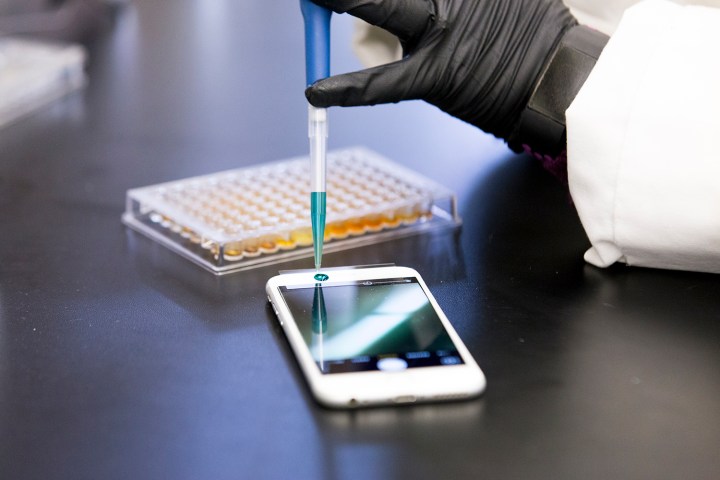
Nowadays, sweat is seen more often as a cause for social insecurity than an evolutionary advantage, but luckily some scientists have kept sweat on a pedestal. Now, a research team led by Jan Halámek, a chemist at the University at Albany, has proposed an unexpected use for sweat — as a biomarker to better secure our devices.
Much like fingerprints, sweat varies from person to person, both in amount and makeup. “Composition of sweat is complex but individualized,” Halámek told Digital Trends, “and sweat is present on the surface of skin, so analysis is non-invasive.”
Halámek’s method would first build a user’s profile (based on the number of amino acids present in his or her sweat) by monitoring sweat levels throughout the day and considering factors like age, sex, and physiological states. As sweat composition differs between teens and the elderly, early birds and night owls, this period would allow the tool to identify the specifics of a person’s perspiration.
“[An] electronic device — smartphone, smartwatch, etc. — would first have an ‘enrollment period’ in which it would, in certain intervals, measure an owner’s metabolite levels present in sweat, building a profile belonging to the owner,” Halámek said.
After the enrollment period, users would simply swipe their sweat on the device (for example, on the camera) which would analyze the sweat content and compare it to the profile before granting access to the device.
Halámek hopes this approach would boost security by adding another check to make sure the person accessing a device is the device owner.
But the method could go beyond securing devices — it could also help monitor a user’s health. “Many metabolites increase or decrease … for certain illnesses,” Halámek said. “This is what the clinical diagnostic field is dealing with every day.”
A research paper by Halámek and his team has been published in the journal ChemPhysChem.


